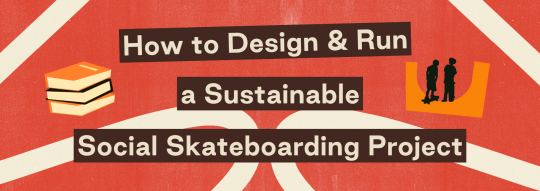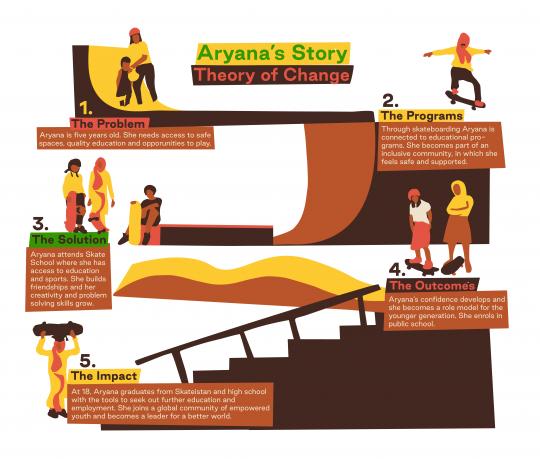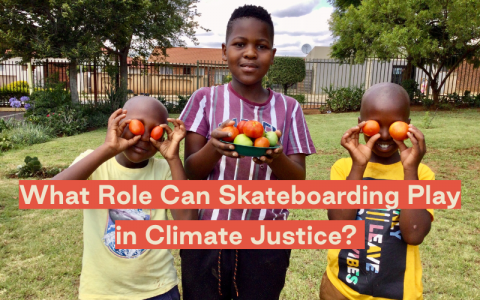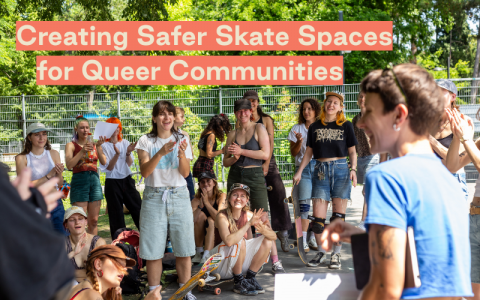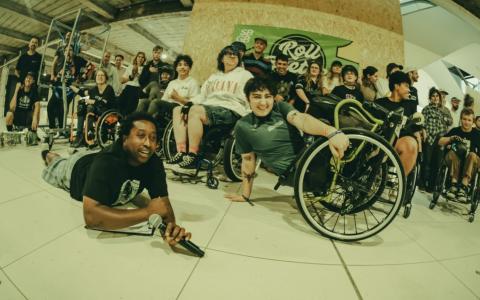Many social skateboarding projects start from a place of passion, often led by small teams of committed volunteers working with limited resources. However, as participation grows and programs expand, it becomes essential to focus on sustainability to ensure your initiatives and team can thrive in the long term.
By incorporating sustainable practices, your organization can grow in a healthy and resilient way. This means being better prepared to handle challenges like losing a funding source or a key team member. To achieve this, focus on the three key elements of sustainability: your programs, your people, and your funding.
Fundraising can be daunting, especially for grassroots skateboarding projects and organizations. But with the right tools and time, you can set up the systems you need to make a lasting impact. This post expands on our concise "Decoding Fundraising & Development Language" guide, diving deeper into funding streams, strategies, and sustainability tips to help your social skate project thrive.
Three Key Elements of Sustainability
Your Programs: The activities you run, who you engage with, and why—this is the whole essence of your project or organization. It’s the reason you exist and the long-term change you want to make. Having a consistent vision and mission that clearly explains your purpose is the core of creating a sustainable social skateboarding project. It is your anchor that you and your team can loop back to in moments of disagreement, tension, or change.
To help funders and stakeholders understand your vision, you can concisely capture your mission in a Theory of Change diagram. A Theory of Change visually maps out the big picture of how the activities you do will create the change you want to see. For inspiration, check out Skateistan’s example below.*
Your Team: Change doesn’t happen without people. While your team may start with a few coaches and volunteers, you’ll also need people to complete the ‘behind the scenes’ roles of managing admin, fundraising, and finances.** Retaining and supporting your team is crucial. Consider how you can recruit, fairly compensate, and retain your staff—keeping in mind that while volunteers are invaluable, relying on them long-term can lead to burnout and high staff turnover. In any case, it’s best to try and keep things simple and steady and do them well, rather than taking on too much, overworking your team and having to deal with the consequences down the line.
Your Funding Model: To run your activities and fairly compensate your team, you will need to create a solid fundraising plan to cover your budget. Ideally, you should build up income streams from diverse sources, never relying on one big grant to cover all of your costs—this would leave your organization extremely vulnerable if that funding source disappears. By combining grants, sponsorships, individual donors, and other creative avenues, you can reduce risk and build a stronger financial foundation.
Different types of funding
- Grants: Financial awards provided by institutions, NGOs, foundations, or governments. These are typically allocated through a competitive application process and often require reporting on how the funds are used and the outcomes achieved. Many cities and states offer grants for youth sports programs and social inclusion. Grants are a great way to secure significant funding or even multi-year support. You’ll need to invest time in researching grants aligned with your focus areas (e.g., social inclusion, gender empowerment, health and wellbeing).***
- Individual donors: Anyone who gets behind your project and wants to support it in some way. This could be through monthly donations, one-off contributions, or fundraising efforts (like organizing events). You can attract and retain individual donors by building effective communication strategies both online and in person. (More on this below!)
- Crowdfunding: Using online platforms such as Chuffed to launch time-sensitive campaigns with specific, emotive and tangible goals. For instance, "Help us fund our summer skate camp." Aligning your campaigns with events like Giving Tuesday can help amplify their reach.
- Events: Organizing skate jams, competitions, exhibitions, or community days. These not only raise funds but also build stronger connections within your community.
- Merchandise/Product Sales: Creating and selling your own merchandise or collaborating with artists/brands.
- Corporate Sponsorships: Partnering with businesses for financial or in-kind support, such as equipment or event sponsorship. In return, offer visibility and recognition. Skate camps, festivals, and other one-off events are especially appealing to sponsors, especially when paired with media coverage or deliverables.
- Membership Fees: Depending on your participants’ economic context, consider introducing optional fees for those who can afford them while maintaining free access or scholarships for others.
Practical Tips for Fundraising Success
- Create smart systems and get creative: Save time by organizing essential resources, such as donor tracking spreadsheets, pitch decks, and pre-prepared templates for grant applications or emails. Make fundraising easier for supporters by providing fundraising packs with everything they need, including guidelines, template posters, photos, and key messaging.
- Prepare pitches: Have a concise, compelling explanation of how your work aligns with gender equity, youth empowerment, or community cohesion. Link these outcomes to UN Sustainable Development Goals (SDGs) for added credibility.
- Treat funding applications as research projects: Strengthen your applications by including credible data that highlights the need for your project. For instance, if research shows high rates of loneliness and depression among young adults in your area, pair those statistics with evidence showing how regular exercise and community engagement can improve mental health and wellbeing.****
- Build donor relationships: Foster personalized, ongoing communication with donors. Keep them informed about your achievements and milestones, and make them feel like valued partners in your journey.
- Demonstrate your impact! Clearly communicate the scope and importance of your work. Share key figures such as the number of participants, their backgrounds, the frequency of your programs, and testimonials about how your project benefits them. This not only provides evidence of your impact but also proves the need for continued funding.
- Speak the donor’s language: Many institutional or foundation donors may be unfamiliar with the positive impact of skateboarding. Focus on the broader social outcomes of your work, such as fostering community cohesion, providing safe recreational spaces, and supporting youth development. Highlight how your program tackles bigger societal issues and contributes to long-term change.
Ensuring Long-Term Sustainability
- Think ahead: Plan for challenges with a contingency strategy, ensuring you can scale activities up or down as needed. Try to keep at least 3-6 months of reserve funds to fall back on if a key funder pulls out. Having this safety net can make all the difference during tough times.
- Collaborate: Partner with other organizations to share resources, expand reach, and strengthen proposals. Collaborations can also appeal to funders interested in broad social impact.
- Capacity building: Train your team in essential skills like fundraising, administration, and program management to strengthen your organization’s resilience.
- Show impact: Regularly share success stories, data, and visuals shared on social media, newsletters, or your website. Use clear metrics, such as the number of participants reached or testimonials, to showcase the tangible difference your project makes.
- Stay focused on your mission: Define your goals clearly and seek funding that aligns with your mission. Avoid shifting your focus to meet donor priorities, as this can dilute your impact and long-term vision.
- Build close, personal relationships with donors: Establish trust with funders by maintaining personalized, direct communication. Whenever possible, arrange phone calls, in-person meetings, or personal email exchanges. These efforts go a long way in securing and retaining support.
- Keep donors on board: Remember that it is far easier to keep a donor engaged who already funds your project than to get a new donor on board. Keep a record of everyone who has donated to your project, big or small, send personal ‘thank you’s’ and make sure you stay in contact with these people. Have a plan in place before your next campaign to update them about what you’ve achieved since they last supported you.
- Send reports on time: Always check and double-check deadlines for reporting obligations. Mark these dates in your calendar and ensure all required materials are submitted promptly. Timeliness reflects professionalism and builds trust with funders. It will go a long way!
One step at a time!
We know that starting your journey toward building a sustainable social skateboarding project can feel overwhelming, but remember—it’s all about taking it step by step. Dedicate small, consistent blocks of time each week to tasks like researching fundraising opportunities, building your donor communications, or setting up a crowdfunding campaign. We promise that these efforts will soon pay off!
By focusing on clear goals, fostering strong relationships, and demonstrating the impact of your work, you’ll create a foundation that not only supports your current programs but ensures their growth and longevity. Keep pushing to create that positive change you want to see in your community.
____
*Through our Collective Impact project, we’ll release a resource early next year to guide skate projects through creating their own theory of change.
**Handy tip: make sure you track all of your incomings and outgoings from the very outset of your project! If you decide to register as a non-profit down the line, you will likely need to provide this information.
*** A good starting point: Take a look at similar organizations and who is funding them - you can find this information on their website and in their annual reports.
****Thank you to Marie from Melanin Skate Gals & Pals for this great tip!
